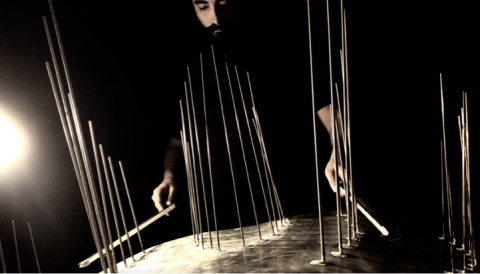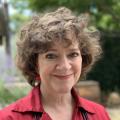Alison Futrell
April 19, 2023
This year’s Ancient Worlds, Modern Communities (AnWoMoCo) panel, organized by Nina Papathanasopoulou, Public Engagement Coordinator for the SCS, and Greg Thalmann, former Chair of the Classics in the Community Committee, offered perspectives from six projects funded by the AnWoMoCo microgrants initiative, which has provided financial support for 149 proposals since January 2019. This dynamic sampling of awardees demonstrated the scope, creativity, and engagement behind the AnWoMoCo mandate to support interdisciplinary collaborations that bring together distinctive communities and to encourage thoughtful engagement and creative expression.
Eva Prionas, Lecturer in Modern Greek at Stanford University, kicked off the panel as the P.I. for Archaeology After School, an intensive six-week online course aimed at young teens attending Greek community-based academies. Initiated as a pre-collegiate enrichment opportunity, the student-centered course introduces participants to the methodology and findings of classical archaeology and guides their exploration of the connections between past and present. Modules feature practical overviews and deep dives into specific topics and featured artifacts (such as the Antikythera Mechanism), engaging students’ attention with a blend of virtual museum visits, online videos, and Microsoft’s AI Common Grounds project, alongside the content developed for the project.
Prionas offered panel attendees a glimpse of the materials from week three, in which individual participants investigate a selection of Bronze Age sites and examine the associated art and artifacts, each student guided in analyzing specific features to build their own interpretations of the lives and experiences of ancient residents. Field experts join the regular discussion sessions, offering their insights on how archaeologists create a research plan around critical questions and how they interpret evidence from the trench. Students were especially enthusiastic about these interactions. Prionas and her team plan to enhance this component in future seasons, adding some brief “live” presentations by archaeologists about their own projects and about how they apply new technologies and approaches to study activities that leave more subtle traces in the material record.
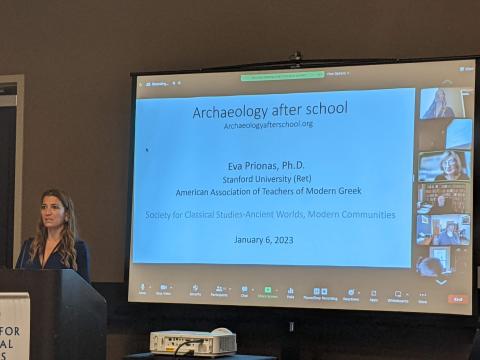
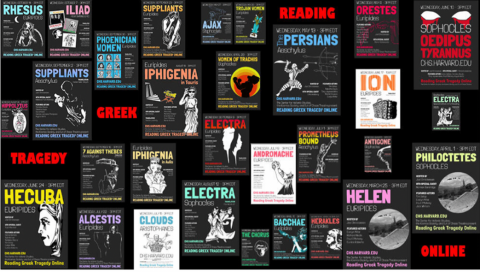
Joel Christensen (Brandeis University) and Paul O’Mahony (Out of Chaos Theater Company) met through Harvard’s Center for Hellenic Studies, brought together by their distinctive approaches to ancient theater. Pandemic lockdowns drove the creation of the Reading Greek Tragedy Online project (RGTO). How can key elements of live theater survive the massive move to a virtual environment? Their goal was to build digital spaces that could structure and sustain new communities of far-flung and isolated participants, as well as reveal new and complicated layers of embodied meaning and lenses of reception.
RGTO is an online video series that pairs virtual performances of ancient drama with specialists who discuss and analyze what emerges from the combination of ancient text and modern voices, movements, and silences—the culminating implications and effects of a slew of staging choices. Further details came out in the presentation’s Q&A session. An episode on choruses, for example, brought in several directors, each of whom produced a specific scene and addressed their choices explicitly. Would music be incorporated and, if so, how? If not, how did this change the scene’s impact? How did the power of the chorus’ “voice” change if played by one actor? How did the camera lens stand in for an imagined member of the audience? Did filming from multiple angles expand perceptual effects beyond the playwright’s original scope? As of this January, 91 episodes of RGTO have been produced, addressing all the surviving Greek tragedies, along with a selection of Greek epic and Roman drama.
In the Fall of 2022, RGTO expanded to create the Playing Medea competition for high-school and university students in the U.S. and Canada. Christensen and O’Mahony reached out to their networks and invited participants to choose one from a handful of Medea scenes, film their own take on the original material, and upload it to the project. An extremely positive response drove them to extend the competition to Greece, Italy, and the UK. Hundreds of submissions came pouring in.
This project has reached and engaged a far-flung audience. Particularly impressive is its function as a classroom resource and bridge between the classroom and transnational student enthusiasts, whose shared insights build and strengthen their growing digital communities.
Ellie Falaris Ganelin spoke on behalf of the Greek Chamber Music Project, whose award helped fund the performance of their fascinating 2021 work Talos Dreams in several concert venues in the San Francisco Bay Area. Composer Costas Dafnis was drawn to the figure of Talos, the giant ichor-driven bronze automaton who guards Crete against invaders in the mythic tradition, memorably stalking across drive-in theater screens in Jason and the Argonauts and featured in Adrienne Mayor’s monograph Gods and Robots. A hybrid tone poem in eight movements, Talos Dreams deploys acoustic as well as electronic and experimental instruments, in particular the intriguing “ghostplate,” a flat metal sheet whose upright, welded range of pitched vertical rods can be either bowed or struck, yielding a sound that is beautifully weird and unexpectedly resonant.
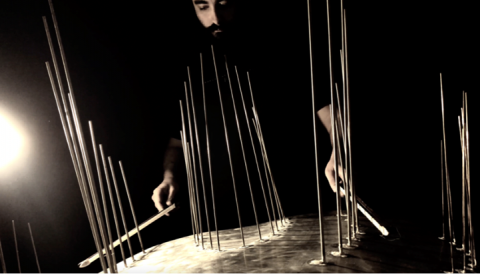
Dafnis was especially interested in exploring the tensions embodied in the story of Talos. On the one hand, this is a man-made object, an enigmatic menace to humans; yet he’s also self-aware, with an emotional expressiveness that flavors representations of the character. Talos Dreams reflects on these contrasts in musical abstraction, ingeniously using technique and technology to hybridize the instrumental sources and output. Lyrics, for example, were reprocessed by an online poetry generation app. Musicians rehearsed and recorded in separate locations (par for the course for the pandemic), with the edit and remix digitally processed; videos, however, ranged widely through natural and industrial settings, situating the performers in forest groves and in manufactured storage spaces, as well as the academic lectern occupied by Mayor for her condensed spoken-word insights. Ganelin played segments from different movements for the panel attendees, each giving a strong sense of the work’s unusual emotive power as well as its technical achievement. As always, I was left with an appetite for the full experience.
Verity Platt (Cornell University) described her experience curating The Sculpture Shoppe, a pop-up exhibit that partnered with off-campus communities to reimagine the Ithaca Mall as a malleable multipurpose space. Determining early on to lean into the consumption and kitschiness of “the mall,” Platt was also catalyzed by the lingering presence of Cornell’s collection of plaster copies of canonical classical sculpture. These casts were once, like the mall, the nexus of attention and meaning, but now are archived relics of outdated assumptions about culture and power. Artists were invited to address and expand upon these complicated pasts; Platt took us through a sampling of the participating pieces and their dynamic and provocative responses to the call.
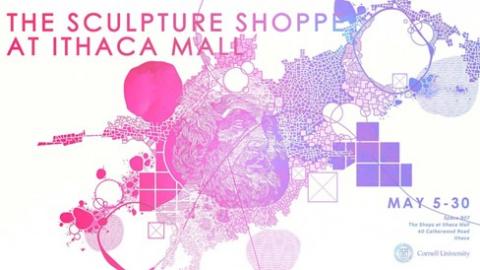
The exhibit showcased an impressive range of viewpoints, with interactive, multimedia creations that merited attentive decoding. Some playfully nodded at technologies of reproduction: a 3D-scanned sculpture that unmade and remade itself at randomized intervals; multiple generations of hands cast in isomalt sugar were continuously reshaped by dripping water; mushrooms cast in resin emerged from a hole ripped through Athena’s plaster head. Others addressed local space(s): visitors were called on personalized odysseys by a bust of Homer that spat out printed directions to regional sites (re)named after places in the ancient Mediterranean, while opening-night attendees grooved to the witty anti-rhythms of MUSE-AK, now brought into the foreground and vocalized in ancient Greek by animatronic and human performers.
Discussion after Platt’s presentation elicited some well-considered tips for future efforts, focusing on the need for more deliberate and long-term outreach to local K-12 schools and for expanded collaboration on the sustainability of community spaces.
Hugh McElroy and Nancy Rabinowitz spoke about their project in progress, Queering the Past(s), an interactive, multimedia online resource that engages young readers in exploring ancient manifestations of sexual identity and gender expression. The project focuses on specific individuals whose distinctive trajectories have inspired, over time, many different readings and interpretations through various historical lenses. While the content has important contemporary resonance, it also implicitly challenges normative and presentist assertions about the past’s alleged clear-cut gender binary.
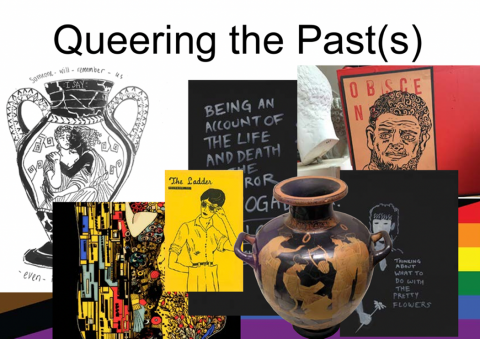
Much of the presentation focused on recent classroom initiatives in many parts of the U.S. and the harmful impact that the absence of inclusive curriculum has on many students, as documented in the GLSEN 2021 National School Climate Survey. McElroy and Rabinowitz hope that making such content available online for individual students can help offset the chilling effect of anti-inclusive measures in numerous states, while also meeting the needs of areas that have incorporated LGBTQ+ voices and experiences into the curriculum, both inside the U.S. and abroad. Two chapters, Sappho and Elagabalus, are currently available, along with an introduction for teachers that includes a guide to related resources.
The panel concluded with a presentation from Maria Christodoulou, host of The Greek Herbalist website, whose awarded project focuses on Ancient Medicine for Modern Times, foregrounding the experiences and needs of women in pharmacological practice and their voices and networks in the transmission of knowledge.
She leads seasonal plant walks across mainland Greece and on the islands, aiming to teach resident and visiting participants the stories and applications of local medicinal plants in scenic and verdant locations. Learning to identify healing herbs where they grow and gaining hands-on familiarity with them enables her students to connect, personally and intentionally, to an ancient living continuum.
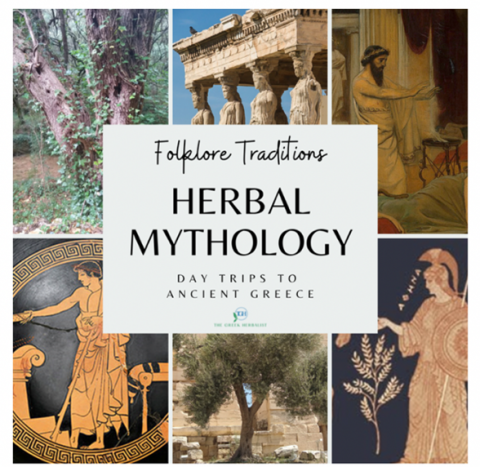
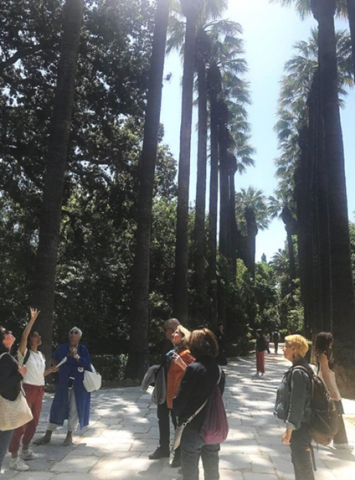
Christodoulou has also been in conversation with current practitioners of traditional herbal medicine in Greece, exchanging insights and comparing individual results in detail, with the goal of assembling a repository of healing recipes to share on the website. The project has a strong and wide appeal with multiple communities well beyond the academy, incorporating a distinctive pedagogical approach and drawing upon local knowledge bases.
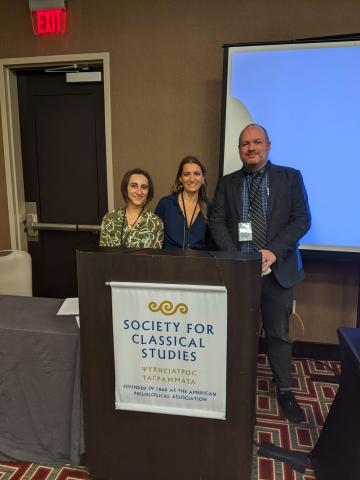
Authors
